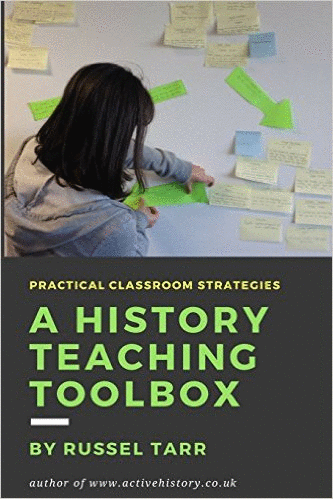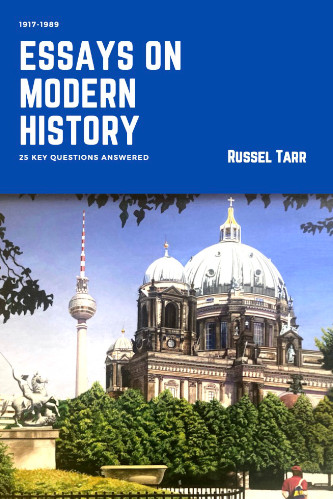IB History: ActiveHistory
An ActiveHistory subscription provides everything you need to construct and deliver a two-year IBDP History course from start to finish using the ActiveHistory IB History Hub.
These consist not just of lesson plans, worksheets and teacher notes, but also multimedia lectures and interactive games and historical simulations ideal for remote learning and self-study.
Use the ActiveHistory curriculum maps and the ActiveHistory syllabus topics to design your own course effectively.
We also have you covered for the Internal Assessment, Extended Essay and Theory of Knowledge in History, not to mention Essay and Sourcework Skills, IBDP History Model Essays and IBDP History Sample Sourcework Exercises / Model answers!
SUBSCRIBE NOW REQUEST A FREE TRIAL
The following resources are designed to be used at any point with students when it is considered time to introduce them to the concept of political ideologies. I have used these resources in a variety of contexts over the years and they draw upon a wide range of topics covered in various parts of the website.
Part 1: An Overview of Left and Right, Communism and Fascism
Teacher Presentation: What is Politics? Why are so many people not interested in it and why is this worrying?
This presentation is given to the entire group and is designed to get them thinking about why politics is so important. It outlines how the study unit will focus on helping students determine whether they are left- or right-wing and thereby help them make sense of some of the more obvious differences between the main political parties.
Left-wing and Right Wing: Which are you? [online simulation]
Students complete the computer questionnaire, which will provide them with some initial suggestions about whether they are Left- or Right-Wing. This can be completed in class, or set as a homework activity. Students are then asked to complete a Triangle Nine Template by completing the following steps: "Step 1: COPY the 9 statements you agreed with from your table and PASTE them into the diagram - but Organise the statements you agree with most strongly towards the TOP of the diagram, and the statements you are less bothered about towards the BOTTOM. Step 2: Colour Left-wing statements in RED and Right-Wing statements in BLUE. Step 3: Give your diagram a title: "The political profile of [YOUR NAME]".

Teacher Slides: Follow-up from the simulation
This brief powerpoint show raises some important issues arising from the simulation. For example, Arguably, the simulation is simplistic: it only offers two contrasting options. Drawbacks of this: "The problem with the world is that fools are so certain of themselves, and wise men so full of doubts" (Russell). In real life most people are moderates and see life in shades of grey. Big moral issues can't be boiled down to just two options. But there are benefits too: Quote: "All advances in civilisation are made by unreasonable people. A reasonable person tries to fit in with the world around them. An unreasonable person tries to make the world fit in with them" (Keynes).
Communism and Fascism: What's the difference?
Building on directly from the "Left and Right Wing" simulation earlier, students complete a questionnaire about key policy areas to help them identify the essential features of dictatorship and democracy, communism and fascism. They then use what they have learned to outline the differences between (a) Fascism and Communism; (b) Dictatorship and democracy; (c) Left and Right Wing politics. Each student is then asked to consider "On the basis of these results, would you describe yourself as being (a) Extreme Left-Wing, (b) Left-Wing, (c) Right-Wing or (d) Extreme Right-Wing?"
Design your 'ideal state'
In this lesson, students take the ideas and principles they are now familiar with and use these to design an 'ideal state' by considering such things as the ideal age for voting, the benefits and disadvantages of having a monarchy, and so on. Plenty of room here for group work and spirited debate!
Part 2: Teacher-led lecture on the history of ideology
Teacher-led online lecture [1]: A brief history of political ideology from the Middle Ages to theEnlightenment!
Complete with handouts and teacher notes, I have put together an online lecture which runs through the development of political ideology. This first presentation brings students up to the Enlightenment and covers such themes as the Great Chain of Being, Renaissance and Reformation, Calvin and Hobbes, attacks on Divine Right, and the French Revolution.

Enlightenment Philosophy: Philosophers, Revolutionaries and the Declaration of the Rights of Man
In this exercise we will clarify what the spirit of the French Revolution actually was. It will then be possible, if and when you study the French Revolution in more depth, to decide:
How far the early revolutionaries delivered on their promises, whether therefore Napoleon was justified in taking power away from them, and whether he then showed more commitment himself to the spirit of the revolution.
Teacher-led online lecture [2]: A brief history of political ideology from the Enlightenment to the modern day!
Complete with handouts and teacher notes, this is the second part of the teacher lecture. together an online lecture which runs through the development of political ideology. This on starts with the Enlightenment and covers such themes as the work of Hegel, Marx, Lenin, Fascism, Communism and democratic socialism.

Factual Test on the issues covered so far (20 questions) | Teacher answers
This test makes use of the "How certain are you?" format. For each question, play for 1, 2 or 3 points to reflect your confidence. If you're correct, you win those points. If not, you lose them down to a minimum of zero points.
Part 3 [Optional/Extension]: Further activities, lessons and resources on themes covered so far
Summary Sheet: Hegel, Marx and Lenin - compared and contrasted
A detailed knowledge organiser that serves as a useful consolidation and revision aid.
Mussolini on Fascism
This is taken from the ActiveHistory scheme of work covering the Rule of Mussolini. Students are aksed to "Read through the article (written by Mussolini in 1932) and the quotes that follow. Use this information to identify what you think are the FIVE most fundamental beliefs of Fascism. Highlight key phrases and use them to complete the following table".
Stalin on Socialism
This is taken from the ActiveHistory scheme of work covering the rule of Stalin. In 1934, H G Wells arrived in Moscow to meet Soviet writers interested in joining the international PEN Club, of which he was then president. While there, Stalin granted him an interview. His deferential conversation was criticised by J M Keynes and George Bernard Shaw, among others, in the New Statesman. First published as a special NS supplement on 27 October 1934.
Stalin and Mao compared: an article by RJ Tarr
This is a copy of an article I originally wrote for History Review Magazine.

Roleplay/Game Activity: Marxism through Arm-Wrestling!
This activity easily fills a full hour and is a very lively and interesting exercise. Students act out a roleplay over several rounds which is deliberately designed to illustrate the Marxist conception of how free market economies function. Through arm-wrestling and games of 'split or steal', the bourgeois class quickly emerges. Thereafter, attempts to maximise profits drives down wages, discriminates against smaller traders and generally creates a class of disaffected, exploited proletarians.
Marxism v. Capitalism (further resources)
At this point, if the class has the time and / or inclination, further activities can be pursued using this dedicated section of ActiveHistory. The unit includes the following:
- Mark Steel's Video Documentary on Marxism and accompanying worksheet (I set this as a homework task and discuss the answers in class afterwards, but if time allows it's a good one to watch together. Mark Steel approaches the topic with rigour but also with humour).
- The Ragged-Trousered Philanthropists: Reading and Comprehension Exercise
An extract from the excellent novel by Robert Tressell and some accompanying questions forms the ideal follow-up to the roleplay activity above. - Teacher-Led Lecture: The Contribution of Lenin to Marxism
This presentation, including two illustrative video clips, outlines the development of revolutionary parties in Russia and then focuses on Lenin's specific contribution to the Marxist canon. It also covers the split in the Social Democratic movement between Mensheviks and Bolsheviks which will become important when we later look at the October Revolution. - In Defence of Capitalism / Criticisms of Marxism
It is very important that in a study of this kind students are reminded that an understanding of Marxist thought does not necessarily mean agreement with it. In this exercise students are presented with a series of common criticisms of Marxism and points in defence of the free market. They are then asked to consider how and if a Marxist could effectively respond to these criticisms. Before tackling this worksheet I like to watch the following classic movie in defence of the capitalist free market system: "I, Pencil".
Anarchism: Bakunin's Catechism of a Revolutionary
This text should be copied into a shared Google Doc. It will then be divided between the members of the class (e.g. the first student is responsible for points 1-3, the second for points 4-6 and so on). Each student should delete all but one of the points, keeping the most interesting. They should then edit it down as appropriate. Then, the finished work should be printed off read through as a class to answer the question “What were the essential beliefs of these revolutionaries?”
Voting Systems: Which is the most truly democratic?
This stand-alone assembly resource was something I put together when the school was preparing to hold student council elections. It highlights some of the essential problems with the whole nature of democracy and how votes should be interpreted.

© 1998-2024 Russel Tarr, ActiveHistory.co.uk Limited (Reg. 6111680)
1 Torrin Drive, Shrewsbury, Shropshire, SY3 6AW, England
All rights reserved | Privacy Policy | Contact






